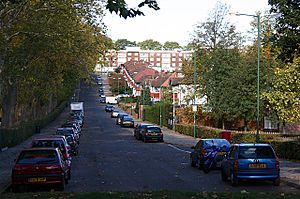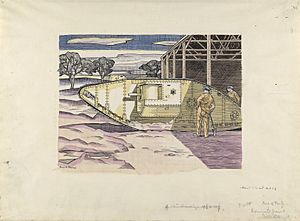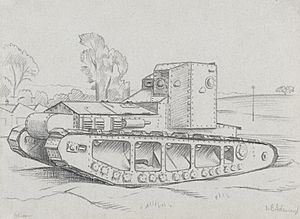Dollis Hill facts for kids
Quick facts for kids Dollis Hill |
|
|---|---|
 Park Side, which runs down from Dollis Hill Lane beside Gladstone Park |
|
| Population | 14,425 (2011 Census. Ward) |
| OS grid reference | TQ225865 |
| London borough | |
| Ceremonial county | Greater London |
| Region | |
| Country | England |
| Sovereign state | United Kingdom |
| Post town | LONDON |
| Postcode district | NW2, NW10 |
| Dialling code | 020 |
| Police | Metropolitan |
| Fire | London |
| Ambulance | London |
| EU Parliament | London |
| UK Parliament |
|
| London Assembly |
|
Dollis Hill is a vibrant area in northwest London, England. It is famous for the large Gladstone Park, which covers about 35 hectares (86 acres). The area has its own London Underground station, Dollis Hill, on the Jubilee line. This station makes it easy to travel to central London.
Dollis Hill is part of the London Borough of Brent. It is located near other areas like Willesden Green, Neasden, and Cricklewood. Most of Dollis Hill is residential, with many Edwardian and 1920s/30s style houses. You can also find a restaurant, greengrocer, and convenience stores close to the tube station.
Dollis Hill played an important role during the Second World War. A special code-breaking computer, used at Bletchley Park, was built here. Also, a secret underground bunker for Winston Churchill's government was hidden in Dollis Hill.
Contents
Discovering Dollis Hill's Past
Early Days and Dollis Hill House
The Dollis Hill Estate was created in the early 1800s. The Finch family bought many farms to form one large estate. Dollis Hill House was built around the 1820s.
Later, the house was owned by Lord Aberdeen. He often had William Ewart Gladstone, who was a Prime Minister of the UK, stay as a guest.
Parks and Public Transport
In 1901, a new public park was opened. It was named Gladstone Park after the former Prime Minister. The park covers about 35 hectares (86 acres).
The Dollis Hill Underground station opened on October 1, 1909. It was first part of the Metropolitan line and is now on the Jubilee line. After the station opened, many Edwardian terraced houses were built nearby.
Dollis Hill and World War I Tanks
During World War I (1914-1918), Dollis Hill was a secret testing ground. From 1917 to 1921, a team designed new tanks here. These included the Anglo-American or Liberty tank, known as the Mark VIII.
Early trials of some of the first military tanks happened in Dollis Hill. You can see pictures of these tanks at The Imperial War Museum in London.
The Secret War and Computers
The Post Office Research Station was built in Dollis Hill in 1921. This station became very important during the Second World War. The famous code-breaking Colossus computer was built here.
A team led by Tommy Flowers created Colossus. This computer was used at Bletchley Park to break secret enemy codes. The Post Office Research Station moved away in the late 1970s. The building is now flats called 'Chartwell Court'.
Underneath a part of the old Post Office Research Station is a secret bunker. This was an alternative Cabinet War Room for Winston Churchill's government. It was code-named Paddock.
Dollis Hill's Diverse Community
Dollis Hill is home to many different people from various backgrounds. In the 2011 Census, the largest group was White British, making up 14.3% of the population. Other large groups include Other White (13.7%), Indians (11.4%), and Black Africans (10.6%).
About 44.6% of people living in Dollis Hill were born in England in 2011. Other common birthplaces include Ireland (5.1%), India (4.3%), Pakistan (4%), and Somalia (3.9%).
The main religions in Dollis Hill are Christians (43.9%), Muslims (31.3%), and Hindus (10.1%).
Getting Around Dollis Hill
Dollis Hill has good transport links. The Dollis Hill station is on the Jubilee line of the London Underground. You can reach Baker Street in about 15 minutes and Westminster in 20 minutes.
The station is in Travelcard Zone 3. It is only three stops from West Hampstead. It is also easy to get to Wembley Stadium from here.
Several London Buses routes serve the area. Routes 226, 302, and N98 serve the area south of Gladstone Park. Routes 182, 232, 245, and 332 serve the area north of the park. Many buses also serve nearby Willesden Green.
Famous People from Dollis Hill
Many interesting people have lived in or visited Dollis Hill.
William Ewart Gladstone, a former British Prime Minister, often visited Dollis Hill House. After he passed away, much of the estate became Gladstone Park, named in his honor.
The famous American writer Mark Twain stayed at Dollis Hill House in 1900. He once wrote that Dollis Hill was "nearer to being a paradise than any other home I ever occupied."
Eric Simms, who studied birds and was a broadcaster, lived in Brook Road. His book, Birds of Town and Suburb (1975), was based on his observations of birds in Dollis Hill.
The comedian and writer David Baddiel grew up in this area.
Nihal Arthanayake, a BBC Radio 5 Live DJ, lives here with his family.
Mark Gottsche, a Gaelic footballer for the London county team, lived on Chapter Road for several years.
Ken Livingstone, a former Member of Parliament and Mayor of London, also lived in Dollis Hill.
Images for kids









